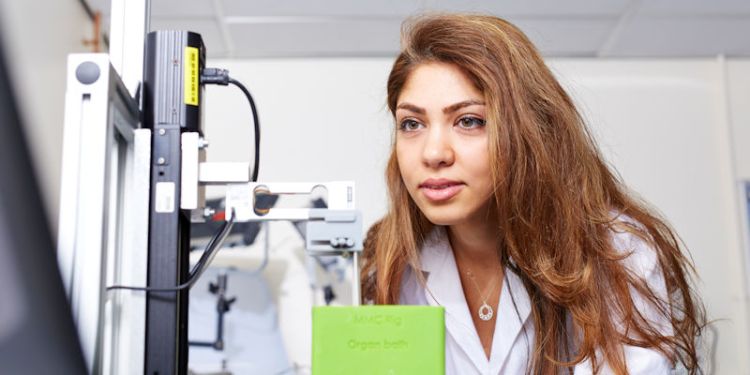Tribology
Overview

Tribology is the science of interacting surfaces in relative motion, and it studies friction, wear and lubrication. Many devices and systems are limited by their surfaces and interfaces. Our aim is to improve the understanding of surface-surface interactions to reduce friction and wear and from this develop mechanistic and numerical tribology models.
Through our research, we provide the knowledge basis for developing novel, low friction and durable tribological systems, for example: lubricants, coatings, machine elements, and medical devices. Applications of tribology include:
- Machine elements: bearings, pumps, Continuous Variable Transmission systems, automatic and manual gearing systems
- Automotive: journal bearings, valve train, powertrain system, transmission system, components for electric vehicle transmission
- Energy: wind turbine gearboxes, components in power plant
- Manufacturing: metalworking fluids, surfaces in grinding and tool wear
- Biomedical: medical implants and soft tissue interfaces
- Aerospace and space: solid lubrication and high temperature erosion/abrasion
Our research
Our tribology research can be grouped in the following areas:
Tribochemistry
The activation of chemical reactions at tribological surfaces is what enables our engines to operate efficiently and without seizure. It also ensures that many machine elements can function even though these is gross metal-metal contact. We have been at the forefront of research into understanding intimate surface and additive reactions in lubricated contacts for many years. Specifically, we are interested in:
- Lubrication of ferrous and non-ferrous surfaces
- Modelling of the tribochemical processes in lubricated contacts
- Using nanotechnology to understand single asperity contacts
- In-situ methods (optical/acoustic) for assessment of chemical and mechanical processes
- Encapsulation of additives for efficient lubrication
- Tribochemistry and how it influences the manufacturing sector (coated abrasives etc)
Tribocorrosion
Corrosion can enhance tribological damage and vice-versa. We have made a substantial contribution to tribocorrosion research, and understanding the synergies and antagonisms between wear and corrosion in the industrial and medical fields. We remain active in all aspects of tribocorrosion research and have activities spanning all fields. We have modelling and experimental work to complement each other. Some of our focus areas include:
- Tribocorrosion in hip and knee implants
- Novel testing strategies for tribocorrosion in medical implants
- Combined electrochemical and mechanical models for fretting and sliding wear
- Erosion-corrosion of materials for slurry handling systems
- Dental tribology and the synergies between dissolution and abrasion
Tribology of soft interfaces
The tribology of soft interfaces covers a vast range of practical applications in biomedical and industrial sectors. It is important that any implantable or extracorporeal medical device has an appropriate and safe interaction with the surrounding tissue. “Tissue” describes a complicated and diverse range of biological materials. In our work, we are particularly interested in:
- Urinary tract and the catheter/tissue interactions
- Soft interfaces developed from polymer brushes
- Poroelastic systems designed from mimicry of cartilage
- Development of soft elastohydrodynamic lubrication (EHL) models
Modelling – mechanistic and semi-deterministic
In tribology the modelling challenges reside in the scenarios where there are metal-metal contacts and intermittent fluid film lubrication, where mixed lubrication is concerned. In boundary lubrication, they lie in where there is significant metal-metal contacts and the friction and wear are dominated by the tribochemical films that are formed through near surface chemistry processes. It is in both of these areas that we are progressing the modelling of complex and reactive interfaces.
In boundary lubrication, we have developed a semi-deterministic framework where we can integrate our tribofilm kinetic data into a solid mechanics framework. In mixed lubrication, we are adapting EHL models with advanced numerical methods to improve efficiency and we are coupling these to our tribofilm/tribochemistry data. The outputs from these studies are bespoke models for systems where lubrication relies on, local rheology and on local surface chemistry.
Research team
View all members of our research team and publications.
Collaborations
We collaborate closely with a number of research groups in UK, USA, Europe, China and Japan through joint research projects, which also includes exchanging research staff members and co-organising research events. We have strong partnerships with lubricant industry, OEMs, surface engineering and medical devices industries.
Every two years we host the Leeds-Lyon Symposium on Tribology, one of the premier events in the world tribology calendar.
PhD projects
We have opportunities for prospective postgraduate researchers. Find out more.
Contact us
If you are interested in collaborating with us or joining our research team, please get in touch with a relevant member of staff.

